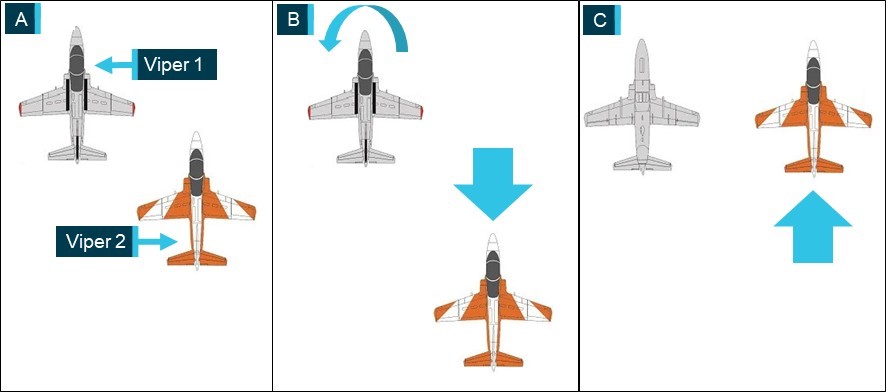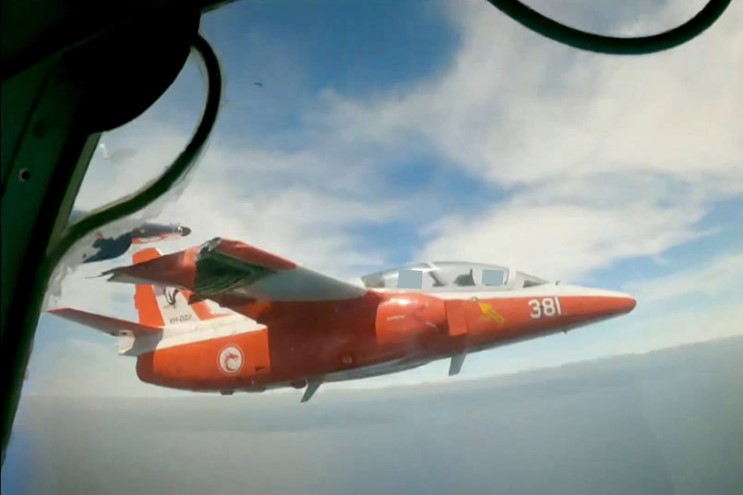The Australian Transport Safety Bureau (ATSB) has issued a preliminary report on its ongoing investigation into a mid-air collision involving two vintage jet trainers over Port Phillip Bay, south of Melbourne, in November 2023.
ATSB Chief Commissioner Angus Mitchell clarified that the preliminary report presents factual information gathered in the early stages of the investigation, excluding analysis or findings. The final report will be released upon the investigation’s conclusion.
On November 19, 2023, the two SIAI-Marchetti S.211 jet trainers operated by Jetworks Aviation and designated as Viper 1 (registration VH-DQJ) and Viper 2 (VH-DZJ) were filming a documentary series designed to impart advanced flying skills, including aerobatics and formation flying, to beginners.
Designed in the late 1970s by the Italian manufacturer SIAI-Marchetti, the S-211 was a military training and light attack aircraft. It features a mid-wing design equipped with full dual controls and is outfitted with tandem-configured ejection seats. Its power source was a Pratt and Whitney Canada JT15D-4C turbofan engine, situated in the mid-section of the fuselage directly behind the cockpit.
The two aircraft involved in the incident were built in Italy in 1985 and delivered to the Republic of Singapore Air Force (RSAF) where they operated in the military flight training role until their retirement in 2009. They were then sold to civilian operators. It is worth mentioning that the ejection seats were rendered inactive in VH-DQJ and VH-DZJ.
What happened?
The report outlines that the aircraft departed from Essendon Fields Airport (MEB), near Melbourne, in a ‘Viper formation.’ Viper 1, the lead aircraft, had a pilot and safety pilot on board, while Viper 2 carried a pilot and camera operator.
According to the pre-flight briefing, the two crews planned to film a maneuver in which Viper 1 would fly inverted while Viper 2 would take position to the right for filming. The plan involved coordinated movements, with Viper 2 adjusting to capture footage while maintaining a safe distance

(Credit: ATSB)
The tragic incident occurred during the second attempt at the planned maneuver. As Viper 2 passed beneath Viper 1, it unexpectedly pitched up and banked away, leading to a collision of their right wings.
“Several impact marks and paint transfers from Viper 2 were present on the upper surface of Viper 1’s right wing, and its landing light cover was shattered,” Mitchell explained.
Video footage from Viper 1 revealed immediate structural failure of Viper 2’s outer right wing, with extensive damage observed as it plunged into Port Phillip Bay at a depth of 24 meters, fatally injuring both occupants.
Viper 1 sustained only minor damage and safely returned to Essendon. The ongoing investigation will delve into formation flying procedures, video and audio analysis, operational categorization, and various other aspects, the ATSB explained.

